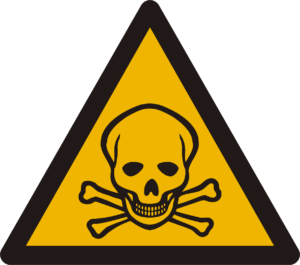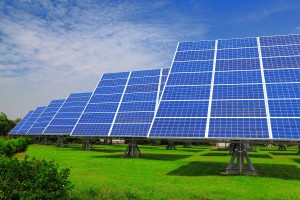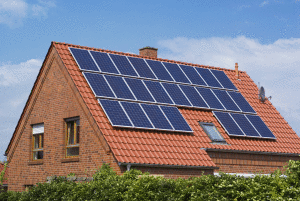This page has information about Solar energy development — both industrial and residential. If you have questions about any of this, or have other material that should be included, or find any errors here, or would like to be on our email list, please email independent physicist John Droz. To keep current with what’s going on with related energy matters, please periodically check back here for updates.
Here is a quick Solar Primer… There are two general ways sunlight is converted into useful energy: passive and active. Passive refers to such actions as opening a window shade to let sunlight in to heat a room. Active uses mechanical devices to collect, store, convert, and distribute solar energy. This page will focus on Active conversions.
There are two main types of Active solar conversion: Photovoltaic and Thermal.
A Thermal system is based on directly using the heat generated by sunlight. In a home this heat can be used to warm water for residential use. In a larger utility scale operation (Concentrated Solar Power: CSP), solar heat is concentrated and collected and then can be used to drive a conventional steam generator — which produces electricity.
A Photovoltaic (PV) System directly converts sunlight into electricity using a process known as the photovoltaic effect. This is based on using a feature of materials known as semi-conductors. PV can be used from small applications (powering a calculator) to commercial electricity production.
Most of our discussion below relates to industrial solar, i.e. an Active conversion of sunlight into electricity (via PV or Thermal). The last section discusses some concerns of residential solar (which is typically on home roofs).
—> The Solar Plan of Action outlines what has been shown to be the most effective strategy for dealing with a proposed solar project. Please read it carefully and follow it closely. <—
[NC residents should check out our North Carolina Solar Page which includes proposed local model solar ordinances, as well as solar-related NC laws, proposed legislation, pertinent agencies, etc.]
Some Potential Solar Environmental Problems —
GenX/PFAS chemicals leeching into groundwater is a major concern. Here are a few sample links:
What are PFAS and Why are they a Problem?
PFAS: What Are the Health Effects?
PFAS chemicals in drinking water pose serious public health threat
EPA confirms GenX-related compounds used in solar panels
“PFAS in the Environment” identifies Solar Panels as a source
FluoroCouncil acknowledged solar panels have these chemicals
Solar panels could be a source of GenX and other perflourinated contaminants
GenX concerns cloud possible expansion of solar facility
Researchers have evidence that PFAS could harm an animal’s immune system
VA Solar Facility is Turning a Local River Brown
Citizen’s Research: 14 Serious Ecological Impacts of Solar
Additional Toxic materials in solar panels
Hazardous Materials Used in Solar Production: a Primer
The disposal of toxic solar waste is another major environmental problem:
The high toxicity of solar waste
Harvard Study: The Dark Side of Solar Power
Solar assets are ‘chronically underperforming’ and modules degrading faster than expected
The dark side of ‘green energy’ and its threat to the nation’s environment
Solar Energy Development Environmental Considerations
Death by solar farms: 71 species of birds killed, ‘entire food chains’ disrupted
Solar Project Killing Birds Wholesale
Birds Torched by Solar Project Test
Solar Farm: 800 degree heat frying birds in mid air
Stanford Study: Solar Projects Could Obliterate Unique Ecosystems
Solar thermal plants can consume twice the water as fossil fuel power plants
Solar Facility Emits 46,000 Tons of CO2
Solar Property Value Impacts —
Note: Compared to industrial wind energy, solar is a relatively newer technology,  so there are fewer studies on all of its environmental and economic consequences to a host community. Here are some studies on a solar project’s impacts on nearby home values:
so there are fewer studies on all of its environmental and economic consequences to a host community. Here are some studies on a solar project’s impacts on nearby home values:
Study: Housing Values Decline within a Mile of Solar Arrays (2020)
Study: Solar Projects Drive Home Values Down (2020)
NC Appraisal of nearby homes after solar project (2013)
Other Solar Economic Realities —
Solar is Our Worst Economic Option (Brookings)
An Examination of the Economics and Practicality of Grid Scale Solar Power
Solar costs are huge compared to natural gas
Solar is 16x more expensive than gas
Solar is Much More Expensive than Nuclear
US Solar: A Cesspool of Waste and Corruption
Merkel Snubs Global Warming And Dumps The Solar Industry
The Industrial Infrastructure of Solar Devices
Solar Subsidies & Handouts —
EIA Report: Subsidies Continue to Roll In For Solar
(See chart to the right…)
Big problem with solar in Japan, as musical chairs stops
Oregon DOJ launches investigations of tax credits for university solar projects
A Cloud Hangs over Solar Financing
Solar Project sued for $12 Million
Another solar manufacturer goes under
World’s largest solar plant applying for federal grant to pay off federal loan
$1.6 billion solar stimulus recipient now wants $539 million of taxpayer cash
Hawaii: $340 M in Solar Credits in last 10 years
As Hawaii Prepares for Utility Reform, the State’s Solar Industry Sheds 3,000 Workers
Should N.C. subsidize solar industry? NO!
Solar Performance —
Solar Power Propaganda vs. the Real World
Why the Best Path to a Low-Carbon Future is Not Wind or Solar Power
10 Big Problems With Solar Energy
The Myth of Solar (& Wind) Capacity
Large Scale Grid Integration of Solar – Many Problems, Few Solutions
California PV Solar Farms – A Bitter Harvest!
The Efficiency of Solar Photovoltaics
Estimating Global Solar PV Load Factors
U.S. Fracking Has ‘Cut Carbon More Than The Whole World’s Wind And Solar’
Critique of Brookings Report: Wind and Solar Technologies Fail 
Poor Performance of World’s Largest Solar Facility
Thermal Solar Energy — Some Technologies Really Are Dumb
Five Fatal Flaws of Solar Energy
Are There Problems with Solar?
$2.2 Billion Solar Plant Suddenly Needs More — Gas!
Issues with Rooftop Solar —
Solar Power in the US — Lessons Learned
Solar Leases Sales Pitches: Overate the benefits
Solar PV Subsidies: Criticism Mounts
Net Metering Info & Newsletter (Edison Electric Institute)
West Virginia Enacts Net Metering Bill
How State Solar Policies Hurt America’s Poor

